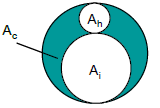ESA Standards and Risk Assessment
Space Debris Mitigation measures aim at reducing the probability of fragmentation events and collisions and minimize the probability of hazard occurrence in orbit and in case of re-entry. The handbook in the ref.[1] provides guidelines on verification methods and possible implementation of the mitigation measures as well as detailed description of the analysis approaches to demonstrate compliance with the requirements in the ESA policy.
The main objectives of the ESA Space Debris Mitigation Policy [1] are:
- To prevent uncontrolled growth of abandoned spacecraft and spent launch vehicle orbital stages with particular regard to preserve the LEO and GEO Protected Regions.
- To prevent debris generation as a result of intentional release of mission-related objects or break-up of space systems.
- To prevent accidental break-ups as a result of explosions of components storing energy on-board space systems.
- To prevent orbital collisions by performing collision avoidance maneuvers and disposal maneuvers to limit long-term presence of non-operational space systems in the Protected Regions.
- To limit casualty risk due to controlled or uncontrolled re-entry of space systems.
Re-entry Risk and Hazard Assessment
Re-entry casualty risk is determined through the probability to cause serious injury or death. The methodology to perform risk assessment is slightly different in the controlled and uncontrolled cases due to the uncertainty on the impact point associated to the uncontrolled re-entries. In a controlled case, it is possible to directly relate the impact point, the characteristics of the surviving fragments and the total population density at the impact point, while in an uncontrolled re-entry all impact locations in the latitude range $[-i, i]$, where $i$ is the orbit inclination, are possible and each of the impact points has different impact probabilities.

The potential human casualty risk includes all injuries due to the impact from the falling debris as well as exposure to hazardous material which include biological, chemical, explosive, and radiological materials. It is assumed that for any object with an impacting kinetic energy more than ${15 J}$ has a potential for human casualty [2]. For an uncontrolled reentry, the risk of human casualty from surviving debris shall not exceed 0.0001 $(1:10^4)$. The casualty area of a surviving fragment is defined [2] as,
\[A_{C,k} = [\sqrt{A_{i,k}}+\sqrt{A_h}]^2\]where, $A_i$ is the average projected area of the fragment surviving the re-entry and $A_h$ is the cross-section of a human ${(0.36 m^2)}$.
And the total casualty area $(A_C)$ for the re-entry is the sum of the casualty area of all the surviving fragments $(A_{C,k})$,
\[A_C = \sum_{k=1}^{N} A_{C,k}\]Then, the total human casualty expectation (E) can be defined as,
\[E = \rho A_C\]where, $\rho$ is the average population density within the re-entry impact zone. For an uncontrolled re-entry, the average population density under the satellite ground track is used, which depends on the orbital inclination.
ESA recommends usage of the following object-oriented re-entry survivability analysis tools to perform the risk assessment of surviving fragments.
- Debris Risk Assessment and Mitigation Analysis (DRAMA) developed by ESA [3]
- Debris Assessment Software (DAS) developed by NASA [4]
- Object Reentry Survival Analysis Tool (ORSAT) developed by NASA [5]
- DEBRISK developed by CNES [6]
References
[1] ESA, SDMW. “Esa space debris mitigation compliance verification guidelines.” ESA unclissified for official use document: ESSB-HB-U-002 (2015).
[2] Wilcutt, T. W. “Process for limiting orbital debris.” NASA, Washington, DC, USA, Tech. Rep. NASA-STD-8719.14 A (2012).
[3] Fuentes, Irene Pontijas, et al. “Upgrade of ESA’s Debris Risk Assessment and Mitigation Analysis (DRAMA) tool: Spacecraft Entry Survival Analysis Module.” Acta Astronautica (2017).
[4] Opiela, J., and Nicholas L. Johnson. “Improvements to NASA’s Debris Assessment Software.” (2007).
[5] Dobarco-Otero, J., et al. “The Object Reentry Survival Analysis Tool (ORSAT)-version 6.0 and its application to spacecraft entry.” Proceedings of the 56th Congress of the International Astronautical Federation, the International Academy of Astronautics, and International Institute of Space Law, IAC-05-B6. Vol. 3. 2005.
[6] Omaly, Pierre, Christophe Magnin Vella, and Stephane Galera. “DEBRISK, CNES tool for re-entry survivability prediction: validation and sensitivity analysis.” Safety is Not an Option, Proceedings of the 6th IAASS Conference. Vol. 715. 2013.